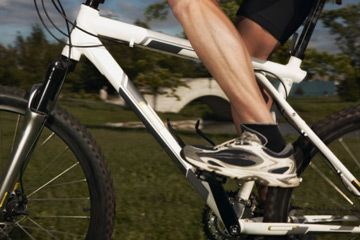Most of us think that cycling is really easy. We've been riding our bikes since we were kids. However, some issues crop up if you've never really thought about how to ride your bike better.
1. One leg is stronger and we have a stroke imbalance.
Here's how to do single leg drills in a video
Exercises to help stroke balance
Using both legs makes sense right? If you're only using one leg, you're tiring that leg out and when you get off to run, you have already over used one leg. Evening out your pedal stroke can help a great deal to improve your run, but also your power on the bike...and the result is faster speed with less energy.
A bike is an adjustable machine. The adjustments are there for a reason. When you have a bike that is fit to your body, you'll find that you ride more comfortably and with less fatigue. You can approximately fit the bike yourself, but a professional bike fit ($100-300) can make a significant difference in your ability to climb and run off the bike.
Where can I get a professional fit in Louisville?
3. Mashing down with your quads, not using your glutes effectively
Here's an explanation of how to better use your muscles SPIN not MASH
Mashing is using your quads and hamstrings more than your glutes. While you can get away with this for pretty good distances, if you ever want to do an endurance race over 25 miles, you'll be glad you've learned to pedal more efficiently.
4. Need for improved bike skills
Lack of bike skills is an important issue. You are often called upon to turn fast, pick up a water bottle, navigate between riders or pedestrians, or brake on a downhill. These skills, when done wrong, create hazardous situations for you and those around you. Practicing bike handling skills is essential for your safety. At least 2-3 riders crash at a particular spot in the Chicago triathlon Oly yearly due to poor judgment and handling skills. Often the most hazardous places are turning at the bottom of a hill. Often riders don't anticipate the speed they will gain on a turn and lose traction and control.
5. Lack of training for race conditions
Outdoor bike training sets
The logic of many novice racers is "If I ride 100 miles in training, I should be able to do it in a race, right?"
Well kinda. A lot more is demanded of you in a race. You must know how to manage your nutrition while riding long distances and not lose speed. Non-race training often includes rest stops. Also, see above for bike handling. These skills are important.
Training rides that include some sets that push your body in intervals, much like HIIT, will help you in a race when the hills, winds, pressure and dehydration all affect you at once. Your body is a very pliable machine that responds to pressure by building more muscle, acuity, blood volume and oxygen efficiency. That's why most IM training programs are 16 weeks or longer. It takes time for the body to build these things and repeated pressure improves your body's response to prepare for the race. Put some bike sets in your training and live to appreciate your efforts!


No comments:
Post a Comment